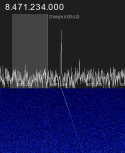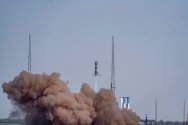The world's first atlas of remote-sensing thermal infrared images was released at the 4th International Forum on Big Data for Sustainable Development Goals in Beijing on Friday, providing valuable data support for sustainable development research.
Released by the Beijing-based International Research Center of Big Data for Sustainable Development Goals (CBAS), the atlas is based on data captured by the SDGSAT-1 satellite. Launched into space in November 2021, SDGSAT-1 is the world's first space science satellite dedicated to serving the UN 2030 Agenda for Sustainable Development.
The atlas includes 10 different types of landscapes across 118 regions worldwide, presenting the surface features of rivers, lakes, seas, mountains, hills, and deserts. It also shows scenes of human activities, such as industrial emissions and urban changes, from a thermal infrared perspective, said Guo Huadong, director of CBAS, at the opening ceremony of the forum.















